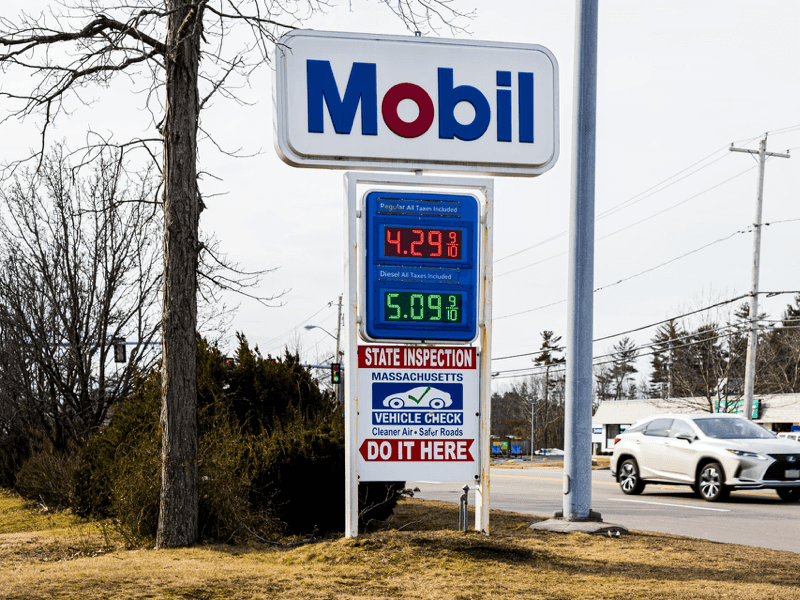Are High Energy Prices Good for the Planet?

There are few things that Americans hate more than high energy prices. We’ve built everything in our country, from our sprawling suburbs to our oversized pickup trucks, under the assumption that commodities like oil and gas will always be cheap.
But low energy prices aren’t an entitlement. When a petrostate like Russia goes to war or oil and gas production can’t keep up with the world’s insatiable demand for the stuff, prices rise.
On the surface, the latest surge in energy prices might seem like a good thing to those that want to see climate action. After all, higher prices at the pump will likely lead to more demand for electric vehicles. Higher gas bills will mean more heat pump installations. It’s easy to imagine it will all work out in the end.
But to celebrate high energy prices is to ignore the impact they have on the most marginalized in this country. Most people in America didn’t have any say in how we built our society.
The essential workers that commute an hour to work each way didn’t decide that we’d build interstates and sprawling suburbs in this country instead of dense, affordable housing. Yet, when oil prices go up, they pay the price.
Even prior to the pandemic, a third of Americans struggled to pay their utility bill. Every year 25 million households in this country forgo food or medicine at some point to pay an electricity or gas bill. 7 million households have to turn off the heat at some point in the winter and tell their kids to wear a parka and a blanket to sleep. Few, if any, of these families have any say in our country’s energy policy.
A cruel vision of climate action — one that celebrates high energy prices — ignores all of this. It says that everyone needs to take their medicine and atone for the sins of the Anthropocene. But what this vision ignores is the reality that in this world it is the poor and marginalized who pay the price for the sins of the wealthy. The essential worker turns off their heat in a blizzard to save money. Meanwhile the yuppie gets a new Tesla and calls it climate action.
This is what an unjust energy transition looks like.
Of course, all of this is a bit of a conundrum for those that care about climate justice. How do you get people to stop buying gas-powered trucks, furnaces, and stoves in a world of cheap energy?
At a high-level, the answer is simple: Provide people with cheaper, cleaner, more energy-efficient alternatives. And do it really fast.
We need to build massive amounts of electric vehicles, heat pumps, and solar panels. We need to invent new technologies and processes to drive prices down. And when that inevitably isn’t enough, we need to stop giving subsidies to fossil fuel companies or tax cuts to the rich, and instead give money to low-income people to buy these cleaner alternatives.
In short, we need to reduce our energy consumption as much as possible and then supply whatever demand remains with renewable energy.
Of course, this strategy is far from novel. People have known this simple formula for decades. The difference is that we finally have the technology to make it happen.
In the 1970s energy crisis, President Jimmy Carter famously told Americans to turn down the heat and put on a cardigan. Congress set the speed to 55 miles per hour to conserve oil. At that time, engineers hadn’t yet invented commercially viable solar panels, wind turbines, or electric vehicles.
The last time oil prices were this high in 2008, lithium ion batteries — a core component in most electric vehicles — cost about $500 per kWh. Today they cost $130 per kWh. In 2008 it cost a utility about $0.40 to generate a kWh of electricity from solar panels. Last year it cost less than $0.04. In 2008 an LED light bulb cost more than $50. A few weeks ago I picked some up at Home Depot for a few bucks each.
Fossil fuel companies want you to believe that they are the only purveyors of cheap, abundant electricity. That we must choose between energy security and a habitable planet. But in 2022, this is complete fiction.
The solution to today’s energy crisis isn’t to “Drill, baby, drill.” But it also isn’t to watch energy prices rise and let the most marginalized among us suffer.
Much of the technology needed to provide cheap, abundant energy and avoid a climate disaster exists today. Now it’s time to deploy it.
